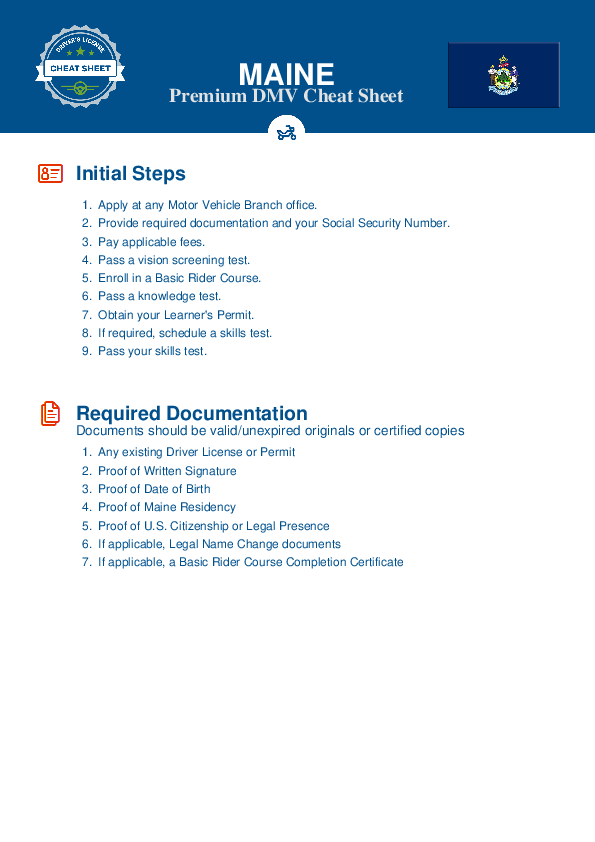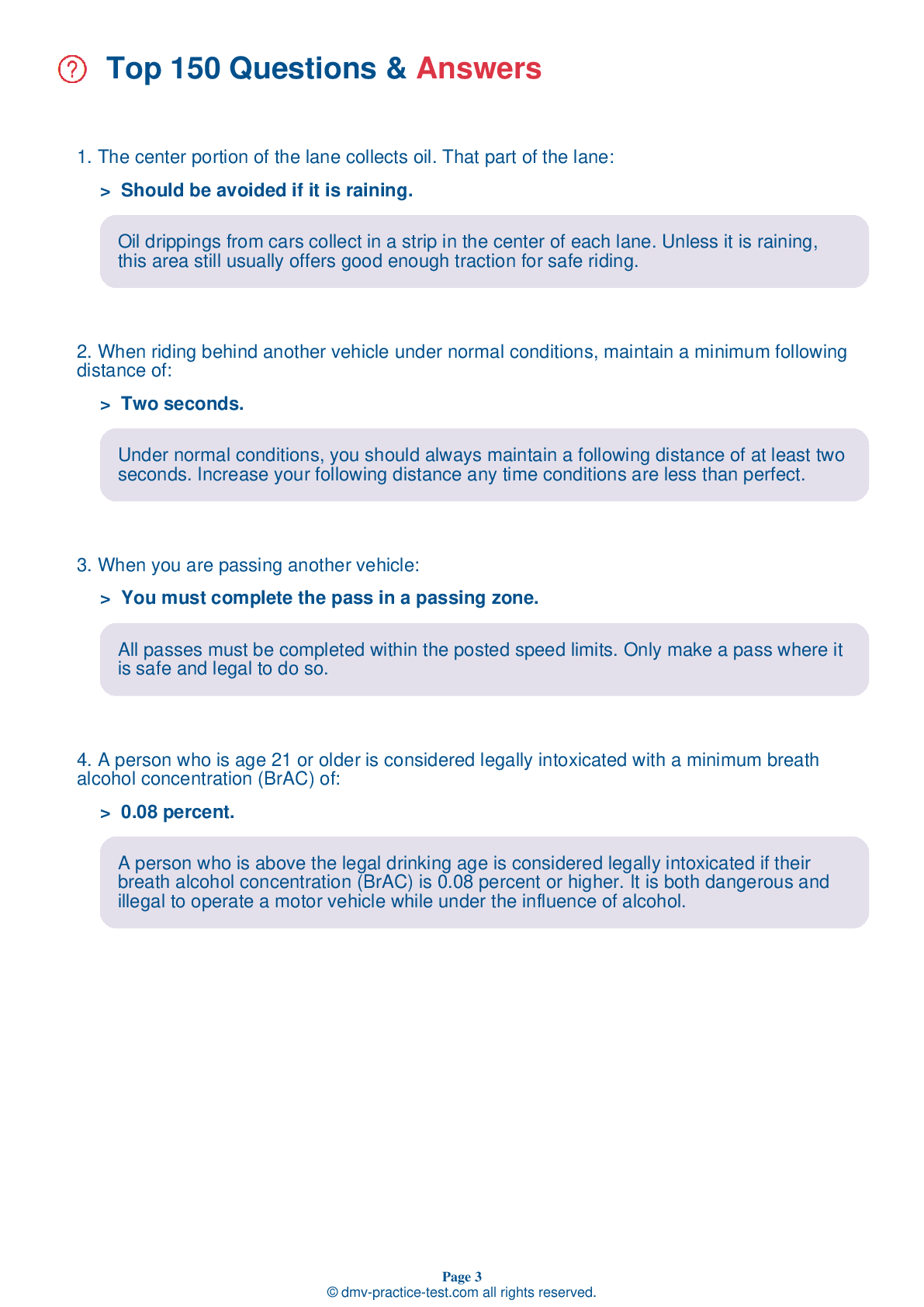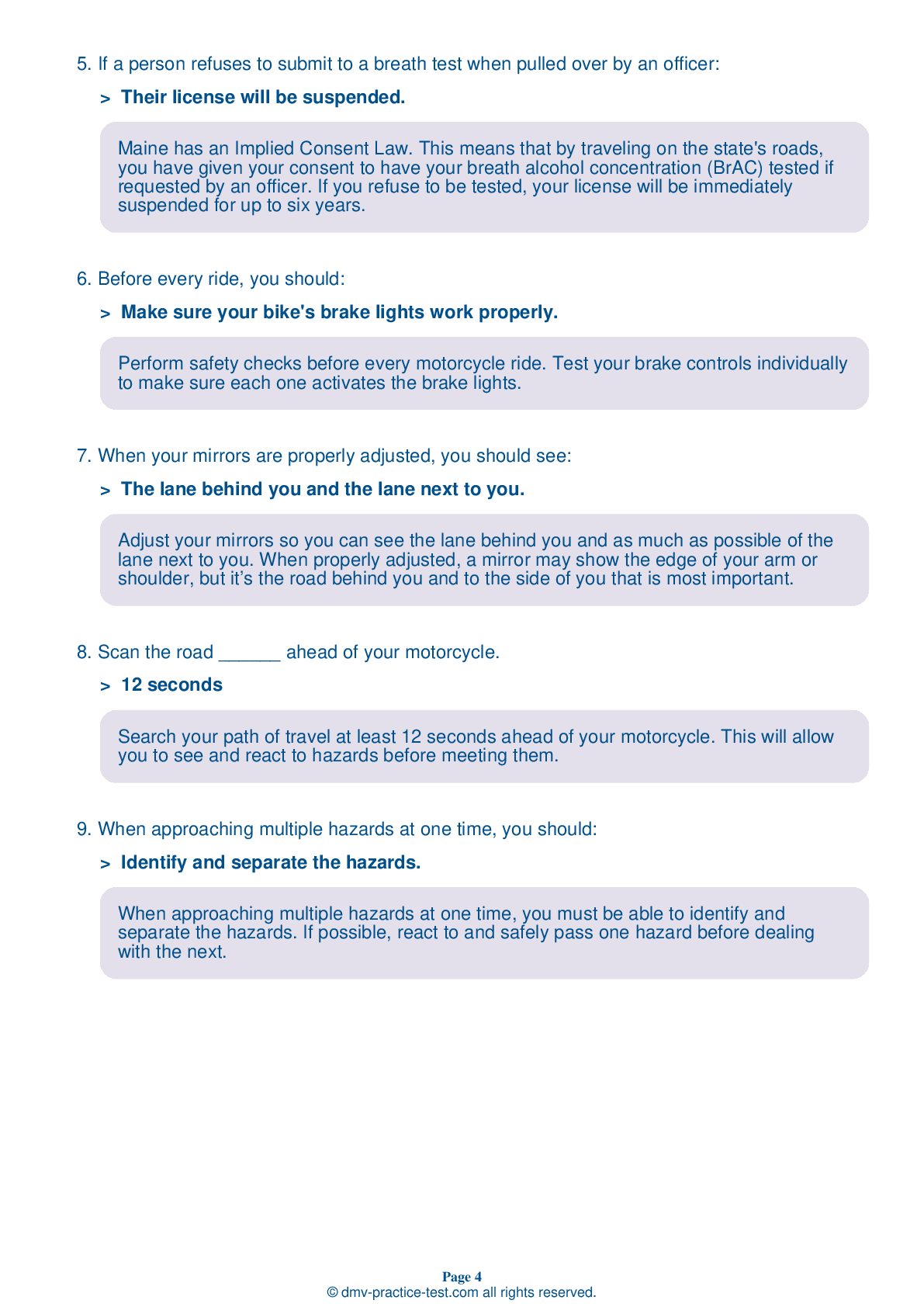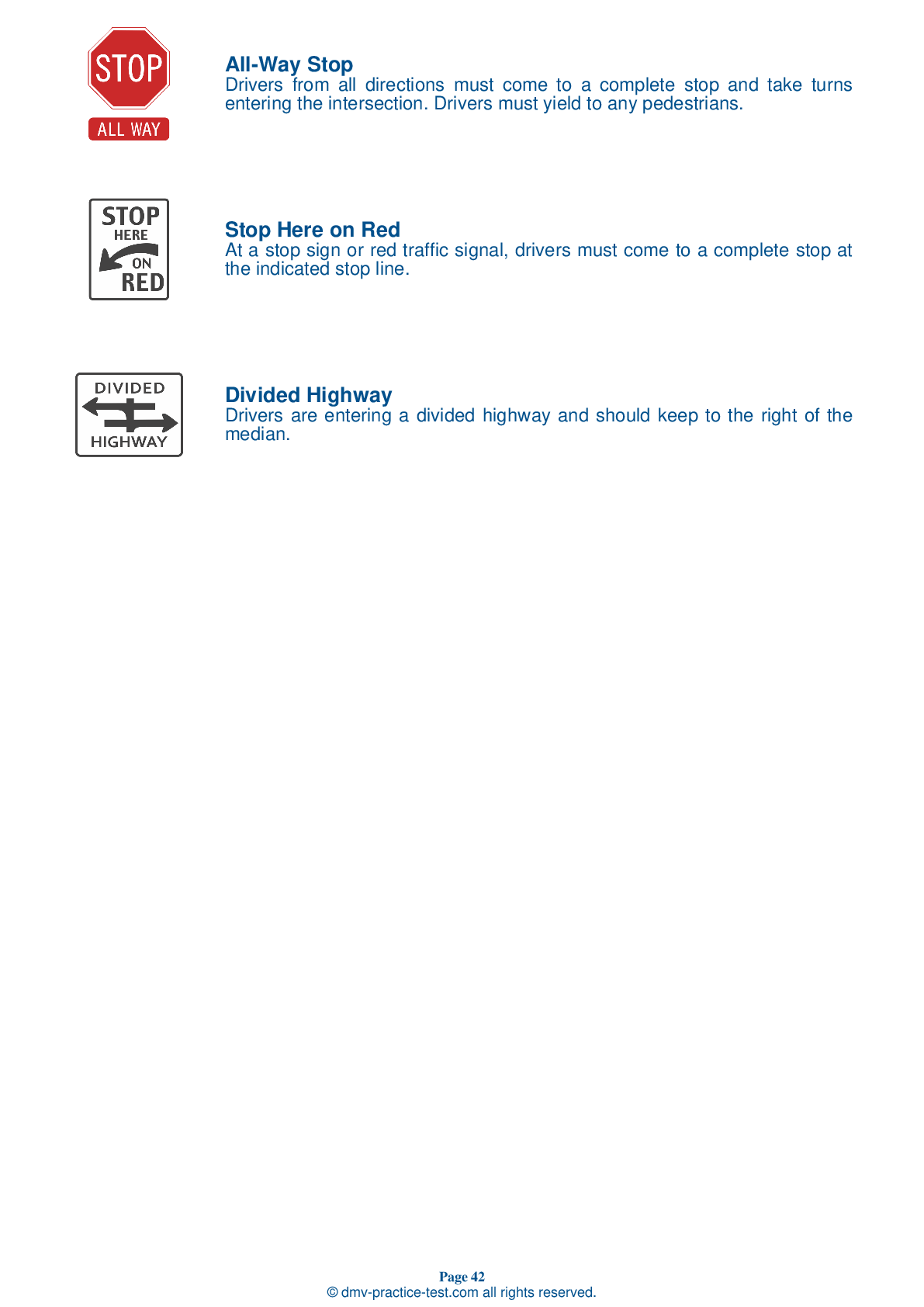Motorcycle Test | License ME 2025 | FREE Online Practice! #9 Page 4 of 7
Take this FREE motorcycle test (license in ME 2025) to check your knowledge of the road rules. To improve your results, download a motorcycle handbook online, study theory, and practice for free on our website. Still worried about how to get a motorcycle license in Maine in 2025? Check our website for more sample tests, train as much as possible, and boost your grades!
22 . In general, riders should:
Because road and traffic conditions are always changing, the safest lane position is also always changing. Choose the position that will maximize your space cushion and allow other drivers to see you most easily.
23 . If no traffic is present when you are taking a curve, it is a good idea to start:
If no traffic is present when you are taking a curve, start on the outside of the curve to increase your line of sight and the effective radius of the turn. As you turn, move toward the inside of the curve. As you pass the center of the curve and prepare to exit, move back toward the outside position. Remain aware of changing road and traffic conditions and adjust as necessary.
24 . Your lane position should:
A properly chosen lane position should provide a number of benefits, including an increased ability to see others and to be seen. It should help you avoid wind blasts, other drivers' blind spots, and surface hazards. Your lane position should discourage other drivers from trying to share your lane and provide you with an escape route, should a hazard arise.
25 . When riding, you should not:
When riding, your arms should be used to steer rather than to hold you up. Your toes should not be pointed down and your knees should be held against the gas tank. Always use your headlight when riding.
26 . To best control a motorcycle, a rider should:
When riding, sit so that you can use your arms to control the motorcycle rather than to hold yourself up. Your arms should be slightly bent when you hold the handgrips. To help maintain your balance, keep your knees against the gas tank and your feet firmly on the footrests.
27 . If your motorcycle has convex mirrors and you are not familiar with this type of mirror, you should practice using the mirrors because:
In comparison to flat mirrors, convex mirrors provide a wider view of the road behind you. They also make objects seem farther away than they actually are. Take the time to get used to your mirrors if your motorcycle is equipped with convex mirrors.
28 . Keep an expanded cushion of space between your motorcycle and the vehicle in front of you:
An expanded cushion of space is needed if your motorcycle will take longer than normal to stop. If the pavement is slippery, if you cannot see through the vehicle ahead of you, or if traffic is heavy and another driver may try to squeeze in front of you, open up to a larger following distance.
See the exact questions that will be on the 2025 Maine DMV exam.
99.2% of people who use the cheat sheet pass the FIRST TIME
Jeneen was tired of paying $5/gallon. She got herself a scooter that required the motorcycle license. She studyed the motorcycle test cheat sheet and passed her test the next day!
Christopher tells us how he knew nothing prior to obtaining the motorcycle study guide, and he only got one question wrong because he clicked on the wrong answer by mistake.



